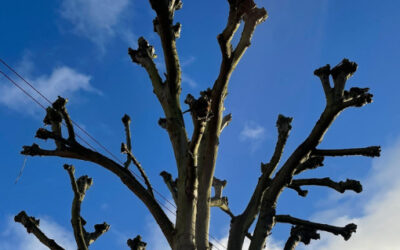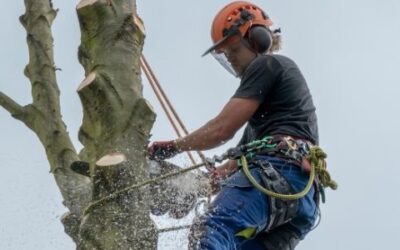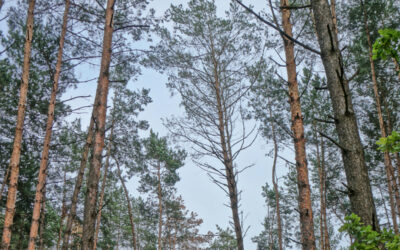Trees are an integral part of the environment. They provide countless benefits, such as oxygen production, carbon sequestration, and habitat for wildlife. However, there are situations where tree removal can be necessary. Such as when it is diseased or infested with pests, poses a safety hazard, or is in the way of planned development. While tree removal can sometimes be difficult, it is crucial to consider the long-term impacts and weigh the pros and cons. In this blog, we will explore what happens to a tree after removal and discuss the various outcomes that can result from this process.
Repurposing the wood
One common way that wood is repurposed from tree removal is by being made into furniture or other wood products. The wood from a tree can be milled into lumber, creating a wide range of products, from tables and chairs to floors and cabinets. Wood from tree removal is also used for paper products, such as cardboard or paper towels.
There are several creative uses for wood from a felled tree in addition to these more conventional ones. For example, the wood can be used as a natural mulch in gardens and landscaping projects or made into biodegradable pots for plants. Some companies are even using wood from tree removals to create bioplastics, which are more environmentally friendly than traditional plastics. It is not always possible to repurpose the wood from a removed tree. But finding ways to reuse this resource can help to reduce waste and the demand for new materials.
The decomposing roots
After the tree felling, the roots can often remain in the ground. These roots will eventually decompose, providing nutrients to the soil and helping to support the growth of other plants. The process of root decomposition can take several years, depending on the tree’s size and soil conditions.
During decomposition, the roots of a tree are broken down by microorganisms and other soil organisms, such as fungi and insects. These organisms consume the roots’ organic matter, releasing nutrients into the soil. The decomposition of tree roots can also improve the structure of the ground, making it more porous and easier for water and air to circulate.
While the decomposition of tree roots can benefit the soil and other plants, it is essential to be aware that the process can also cause changes to the landscape. For example, the decomposition of large tree roots may result in the ground sinking or settling in certain areas. In these cases, it may be necessary to take steps to restore the affected areas. It would be best to ask for advice from a professional tree surgeon.
Preventing the spread of disease and pests
When a tree is diseased or infested with pests, it can pose a risk to the health of other trees in the area. In these cases, tree removal can help to prevent the spread of the disease or infestation to other trees.
Some diseases and pests can affect trees, requiring a specific course of treatment. For example, an infected tree with a fungal infection would need to tree removal to prevent the fungus from spreading. Similarly, if a tree is infested with pests, such as bark beetles or aphids, removing the tree and treating the surrounding area can help to control the infestation. Doing this can also help prevent them from spreading.
It is essential to consult with a tree surgeon to determine the best course of action for addressing a diseased or infested tree. In some cases, it can be possible to treat the tree and save it rather than remove it, but this will depend on the severity of the issue and the type of disease or pest involved.
The Impact on the Ecosystem
Tree removal can also have more subtle effects on the ecosystem. For example, removing a tree that serves as a windbreak can change the local climate. In contrast, removing a tree that provides shade can affect the temperature and humidity of an area.
It is crucial to consider the potential impacts of tree removal on the surrounding ecosystem and carefully weigh the pros and cons before deciding. In some cases, it is possible to minimize the effects of tree removal through careful planning and planting replacement trees. Seeking help from knowledgeable tree service experts would be the best option.
Positive Outcomes
Removing a tree blocking the growth of other, healthier trees can benefit the ecosystem by allowing the other trees to thrive.
Another situation where tree removal can have a positive impact is when it allows for planting a more environmentally friendly species in its place. Some tree species are more beneficial to the environment than others. Because of this, their ability to absorb more carbon dioxide, provide habitat for wildlife, or regulate the local water cycle. By replacing a tree that is less beneficial to the environment with one that is more beneficial, it is possible to have a net positive impact on the ecosystem.
It is essential to remember that every situation is different, and you should consult a tree surgery company before making a decision to remove a tree. Before deciding, consider the tree removal’s long-term impacts and work with an expert tree surgeon to determine the best action.
Choose a Professional Tree Surgery Company
If you consider removing a tree, working with a professional tree surgery company is vital to ensure a qualified arborist does the job. At Tree Surgeons Derby, our team of professionals has the knowledge and expertise to handle all aspects of tree felling and removal, from assessing the tree’s health to safely removing and disposing of the debris. We are committed to providing high-quality tree service that is both environmentally responsible and cost-effective. Contact us now, and let us assist you with your tree care needs.



